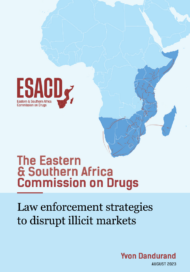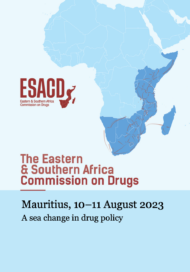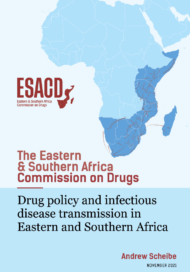Posted on 27 Aug 2023
Eastern and Southern African countries are significant illicit drug transit hubs and consumer markets. Drug markets are now a major component of the region’s illicit economies. These markets are ‘diverse, expanding and internationally networked’ and no longer confined to the coastal periphery or major urban centres. Larger urban nodes in the region with long-standing drug markets have spawned street-based retail markets, which have generated armed, violent battles for control over territory. Despite a robust prohibition regime and ongoing law enforcement efforts, these measures have not succeeded in neutralizing illicit drug markets in the region. The drug markets have continued to adapt and grow.
Law enforcement strategies to disrupt illicit drug markets, and the repressive drug policies that underpin them, are responsible for their modest success and simultaneously their harmful social and public-health impact. Funding these disruption initiatives also competes with money that could be used to invest in development and harm reduction approaches.
After defining illicit drug markets and disruption efforts, this paper discusses how the impact of law enforcement disruption strategies is typically measured. That is followed by a summary of research findings about the impact, consequences and costs of the four broad law enforcement strategies reviewed. The paper concludes with the potential implications of these findings for law enforcement countering illicit drug markets and the criminal networks that operate them.




